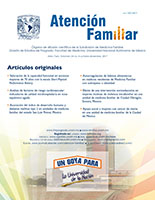Gaucher disease: a case study
Main Article Content
Abstract
Gaucher disease (gd) is an autosomal recessive hereditary disorder, which causes disturbances on target organs such as liver, spleen, nervous system, bone marrow and lungs. Case report: A five-year-old male patient with persistent episodes of epistaxis with two weeks of progression, limb ecchymosis and hepatosplenomegaly, pain in the limbs, progressive loss of muscle strength, psychomotor regression during 10 months, and myoclonic epilepsy. The X-ray from long bones showed the shape of an Erlenmeyer flask, bone marrow biopsy with hypercellularity, due to abundant foamy histiocytes and lysosomal accumulation. We integrated the diagnosis and stratification of eg type iii b. Conclusion: enzyme replacement therapy imiglucerase, topiramate, calcitriol and calcium carbonate improved the clinical condition of the patient.
